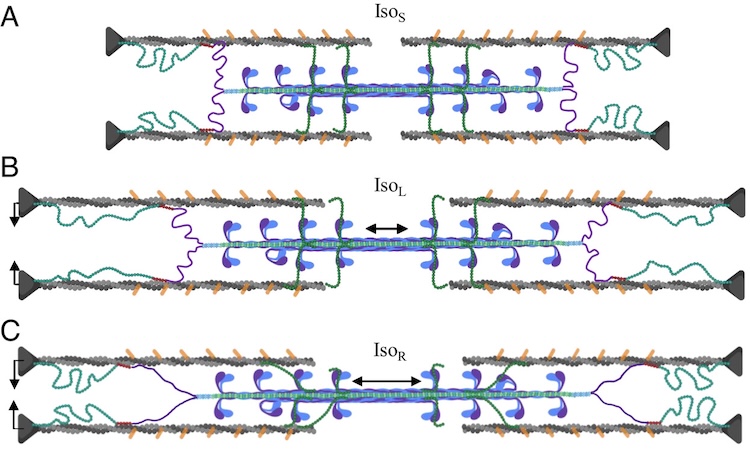
Residual force enhancement (RFE) is a property of skeletal muscle where more force is produced after an active stretch than if it were simply activated at the longer length. This property is important for jumping, locomotive, and stabilizing movements of the body. The molecular mechanism underlying RFE is not well understood.
In muscle, the protein titin connects myofilaments and has been shown to have many roles in sarcomere stability and modulating contraction. The authors of this study investigated titin’s function during contraction using small-angle X-ray diffraction of untreated WT mouse skeletal muscle and muscle where 50% of the titin was cleaved. They compared their results to those obtained from mdm titin mutant mce that do not show residual force enhancement.
The authors observed that the sarcomeres in the RFE state show structural differences from those during isometric contraction, indicating increased thick filament strain and decreased lattice spacing, most likely caused by elevated titin-based forces. These structural differences after an active stretch were reduced in WT muscle after titin cleavage and absent in mdm muscle. The authors concluded that decreased lattice spacing, increased thick filament stiffness, and increased non-cross-bridge forces due to titin, therefore, are the major contributors to RFE providing a molecular explanation for this important physical property of muscle.
See: Anthony L. Hessel, Michel Kuehn, Bradley M. Palmer, Devin Nissen, Dhruv Mishra, Venus Joumaa, Weikang Ma, Kiisa C. Nishikawa, Thomas C. Irving, Wolfgang A. Linke. The distinctive mechanical and structural signatures of residual force enhancement in myofibers. Proc Natl Acad Sci U S A. 2024. 121 (52) e241388312